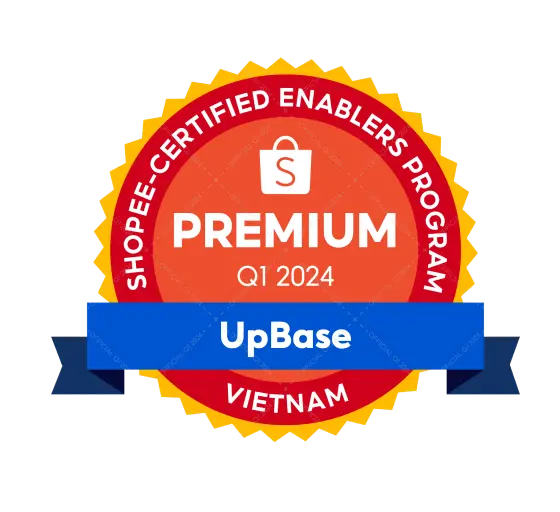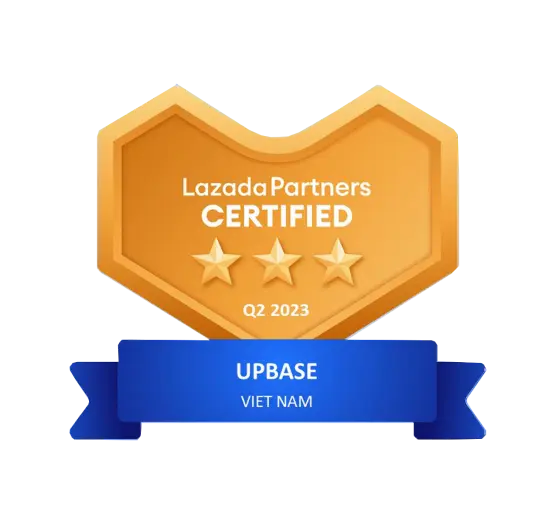In the business field, product innovation is the "key" determining the success of a company. However, not every business knows how to build a new product development strategy. In the following article, UpBase will help you explore the detailed steps to develop a new product development strategy!
Steps to develop a new product development strategy
Step 1: Define the product development goals.
The first and crucial step in building a new product development strategy is to determine specific goals that the business aims to achieve. These objectives could include increasing sales, expanding market reach, improving service quality, or even creating a new market. Clearly defining the primary goal serves as a "compass" for the business, providing a clear direction for product development.
- Short-term and long-term goals
During the goal-setting process, businesses need to distinguish between short-term and long-term objectives. Short-term goals may include attracting initial attention, creating a positive buzz within the user community, or improving brand reputation. On the other hand, long-term goals often involve sustainability, prolonged growth, market dominance, and establishing a new definition for the business within that industry.
- Specific and measurable goals
Goals should be as specific as possible. This helps everyone in the business visualize and clearly define success. Instead of saying "increase sales," specify it as "increase sales by 20% within 12 months from the product launch date." With specific numerical targets, the business can measure and track progress more effectively.
- Align with the business's global strategy.
Product development goals should also reflect the business's global strategy. If a business is aiming for international expansion, product development goals should align with global growth. Conversely, if a business focuses on the domestic market, goals should be shaped to meet the needs and characteristics of that specific market.
- Integrate with the core values and culture of the business
Product development goals need to be closely aligned with the core values and culture of the business. This ensures that the product brings economic benefits, adds value for customers and partners. Goals should also resonate with the values and culture that the business aims to convey through the new product.
- Involvement of stakeholders
Finally, the goal-setting process requires the involvement of all stakeholders within the business. Consensus and a shared understanding of the goals will help the team work towards the same objective, enhance teamwork, and ensure that everyone is aligned towards a common future that the new product will bring.
Step 2: Market Research
The next crucial step in developing a new product development strategy is to conduct detailed and comprehensive market research. This involves more than just gathering information about the target market; it is a process of analyzing and gaining in-depth understanding of the market's characteristics, trends, and motivations.
- Market trend analysis
Thorough market trend research helps evaluate competitive advantages, customer preferences, and technological advancements. With this information, businesses can adapt flexibly to the dynamic market.
- Evaluate the size and market potential
Determining the size and market potential helps the business ensure that the product will have enough opportunities for development, attracting profits, especially when the company is considering expanding into new markets.
- Competitors Analysis
In-depth research on competitors is the key for businesses to determine their position in the market. Analyzing products, marketing strategies, and strengths/weaknesses also helps businesses identify opportunities and challenges they may face.
- Gather customer opinions
Customer opinions are a valuable source of information. Businesses need to integrate various methods of collecting feedback to accurately understand the expectations and requirements of customers for the new product.
- Segmenting the target market
Segmenting the target market helps clearly identify the customer base and optimize marketing strategies. In reality, each customer group has different needs and desires, making it essential to tailor marketing efforts accordingly.
- Data synthesis and analysis
After collecting data, businesses need to synthesize and analyze the information. Feedback from various sources will help the business make more effective and optimized decisions in developing the new product.
Step 3: Product Idea Development
After gathering enough information from market research, businesses can begin the process of developing a product idea. During this phase, businesses should ask questions such as, "How can our new product effectively address a problem or meet the needs of customers?" This process often requires creative thinking and a focus on creating unique value for customers.
- Dig for gold in the sand
When initiating the product idea development process, businesses need to seek and select the most innovative ideas. Ideally, businesses should organize group discussions, brainstorming sessions, or create conditions for employees to freely express opinions and ideas.
- Classifying ideas
After collecting various ideas from different sources, businesses need to classify and filter those ideas. The focus should be on ideas with high potential that are closely related to the product development goals.
- Focus on practical value
Product ideas should focus on providing practical value to customers. Businesses should ask questions such as "What problem does our product solve?" or "How can the product provide the best solution for users?" to clarify the direction of development.
- Facing challenges
In the process of idea development, facing challenges is inevitable. Businesses need to assess every aspect of the idea, from technical aspects to market accessibility. This is a way to help businesses identify and address potential difficulties.
- Optimizing creativity
Creativity doesn't only manifest in generating initial ideas but also in the process of optimizing those ideas. Businesses need to find ways to make the product unique and naturally appealing to customers.
- Integrating feedback from both internal teams and customers
Before deciding which idea to develop, it's crucial to collect feedback from internal staff and potential customers. This feedback helps ensure that the idea meets the expectations of the business as well as the actual needs of the market.
- Identify standout features
Finally, the business needs to identify the standout features of the product idea. This could be its utility, innovative design, or a novel solution to a specific industry problem. This forms the basis for developing the next product in the strategy refinement process.
Step 4: Analyze and Refine Ideas
Faced with numerous new ideas, businesses need to conduct analysis and screening to identify the most promising ones. Businesses can rely on criteria such as market accessibility, development costs, and competitive potential. This is a way to help businesses choose ideas with the highest potential for profitability and success.
- Analyze potential and costs
Trước khi quyết định chọn ý tưởng nào để phát triển, doanh nghiệp cần thực hiện phân tích về tiềm năng và chi phí của từng ý tưởng. Với bước này, doanh nghiệp sẽ đánh giá khả năng tiếp cận thị trường, dự đoán doanh số bán hàng, ước tính chi phí phát triển và tiếp thị sản phẩm.
- Evaluate competitive potential
Businesses need to determine the competitive potential of an idea when introducing it to the market. For a more accurate assessment, companies should analyze competitors, their strengths/weaknesses, how your product stands in the market, and how it can appeal to consumers.
- Identify risks and benefits
Every idea comes with risks and benefits. Therefore, businesses need to carefully assess these aspects to determine whether the expected benefits are worthwhile and if the risks can be managed.
- Testing the idea with customers
Before proceeding with the formal development of a product, businesses need to test the idea with potential customers. Prototype models, surveys, or other methods can be used to gather direct feedback from consumers.
- Evaluate growth potential
Evaluating the growth potential of the idea in the future is a crucial aspect. Businesses need to determine whether the product can adapt to the market over the long term, expand, or incorporate additional versions or features.
- Screening ideas based on key criteria
Screening ideas based on important criteria such as growth potential, costs, and customer feedback is essential. Ideas that do not meet these criteria may need adjustment or elimination to focus on those with high potential.
- Developing a detailed development plan
After selecting an idea, the business needs to develop a specific development plan. This plan will include a schedule, necessary resources, and specific steps to turn the idea into a tangible product.
Step 5: Product Development and Testing
With the selected ideas, the business moves into the process of developing the actual product. This process includes building models, creating prototypes, and manufacturing the product. Subsequently, the product undergoes testing to ensure quality, functionality, and receives feedback from consumers.
- Building a Prototype Model
Before the product enters mass production, businesses need to build a prototype model to test and adjust technical factors. This model helps ensure that the product will meet the specified requirements and expectations from the initial idea.
- Creating a demo or beta version
Creating a demo or beta version of the product is a crucial step for businesses to test it with the target consumer group. Through this process, the business will receive real-time feedback from users. Based on this feedback, the company can adjust the features, interface, and performance of the product before launching the official version.
- Conducting test trials
Test trials are a crucial stage for businesses to ensure that the product operates as expected, meeting all technical requirements. This process helps identify and fix errors, optimize performance, and ensure the product will not encounter significant issues when introduced to the market.
- Continuously collecting feedback
Throughout the development and testing process, continuously collecting feedback from users as well as the development team is crucial. This feedback helps shape and improve the product based on real experiences and user expectations.
- Adjusting features and design
Based on feedback from test trials and demos, businesses need to adjust the features and design of the product. This helps make the product more flexible and better aligned with the needs and desires of consumers.
- Developing the final version
After completing and adjusting the necessary factors, the business can begin the process of developing the final version of the product. This process includes preparing for mass production and launching the product to the market.
- Implementing marketing and advertising strategies
Before the official launch of the product, the business needs to develop and implement marketing and advertising strategies. Through this strategy, the company will determine marketing channels, pricing strategies, and all advertising factors to ensure the best attention and reach to the target audience.
Step 6: Commercialization of the Product
Finally, after the product has been completed and validated, the business moves on to the commercialization step. This step involves building marketing strategies, promoting the product, and establishing customer relationships. This process ensures that the product is effectively introduced to the market and attracts attention from the target audience.
- Pricing classification strategy
Determining the pricing strategy is a crucial part of the product commercialization process. In this step, the business will decide how to apply the pricing strategy: premium, mid-range, or budget. This is a way for the business to reflect the value and position of the product in the market.
- Planning marketing and advertising strategies
Planning marketing and advertising is a crucial step to ensure effective promotion of the product. To attract attention from customers, businesses need to identify online and offline marketing channels, develop advertising content, and build an effective promotional strategy.
- Building a distribution channel strategy
Distribution channel strategy is a determining factor in how the product will reach consumers. Some common distribution channels today include traditional retail, online channels, or a combination of both. Businesses need to define this strategy to ensure the product's effective reach to consumers.
- Ordering, manage Product Supply
Supply management plays a crucial role in ensuring the product is always available and meets market demands. Therefore, businesses need to establish ordering processes, monitor inventory, and optimize the supply chain to minimize the risk of stockouts.
- Building a post-sales and customer care strategy
Post-sales and customer care strategy play a crucial role in building long-term relationships with consumers. This process includes establishing warranty programs, technical support, and creating promotional programs to strengthen trust and increase customer loyalty.
- Determining the product expansion plan
In the future, the business needs to determine the product expansion plan to maintain freshness and attract new customers. The company may consider developing new versions, adding features, or expanding into new markets.
- Measurement and Performance Evaluation
Lastly, the business needs to establish performance indicators and a measurement system to monitor the success of the product in the market. Evaluating sales figures, customer feedback, and advertising metrics helps the business adjust its strategy and make informed decisions for future strategies.
Factors to consider when developing a new product development strategy
The targeted Market
The target market is a factor that helps the business decide where to launch the product. To determine an effective target market, the business needs to be aware of the market size, characteristics of the target customer base, and the cultural, economic, and social factors influencing buying behavior.
Customers needs
Understanding customer needs is the key to creating valuable and market-appropriate products. Businesses need to ask questions such as "What do customers need?", "What problems are they currently facing?" and "How can the new product solve these problems?" to ensure that the product meets customer expectations.
Competitors
Studying competitors is crucial for a business to determine its position in the market. The business can analyze the products and services of competitors, their marketing strategies, and their strengths/weaknesses. This information helps the business identify opportunities and challenges they may face.
Resources and competitive capabilities of the business
Identifying the resources and competitive capabilities of the business is also a crucial factor for the business to develop a plan for introducing new products. This factor includes financial resources, research and development capabilities, and market access capabilities.
Product Innovation Strategy
"Product innovation strategy" is a comprehensive plan to develop and maintain the uniqueness of a product. Typically, the key components of the strategy include innovation goals, identification of new technologies, new manufacturing processes, and considerations for integrating innovative features or designs to make the product stand out in the market. This helps the business sustain the attractiveness and competitiveness of the product over time.
Examples of successful new product development strategies.
Examples in the technology sector.
Amazon: Focusing on customer's needs
Amazon is a prime example of focusing on customer needs in product development strategy. Beyond merely creating products to sell, Amazon prioritizes meeting customer needs. They even write press releases before product launches, placing themselves in the customer's shoes and building products from that foundation. Moreover, Amazon concentrates on conveying the product message in a way that is easy to understand and emotionally resonant with consumers. This strategy helps Amazon create unique products that address the real needs of customers.
Google: Focused on technology to solve complex problems
Google's product development strategy focuses on leveraging new technologies to address significant societal issues. Positioned as a market leader, Google prioritizes utility and widespread accessibility. They not only optimize products to increase revenue but also to solve global challenges. This strategy enables Google to maintain its position as a pioneering company with a long-term vision and significant impact.
Apple: Platform Strategy and Product Optimization
Apple has established a platform strategy and product development through optimization. They create the highest quality products and find markets for them to grow. Apple believes that customers will pay a premium for quality, and they are not afraid to invest in research and development to optimize existing products. And this strategy has helped Apple become one of the giants in the technology industry.
Microsoft: Expanding product reach through partnerships
Microsoft has chosen a product innovation strategy through partnerships. They understand that innovation comes not only from within but also from collaboration with partners. Instead of investing resources in the smartphone market like other tech companies, Microsoft has invested in AI and Cloud computing. The corporation has created an environment for innovation and creativity. Microsoft collaborates with reputable companies and utilizes open-source code to build its product innovation strategy.
Netflix: Focusing on profit and returns to retain customers
Netflix's strategy for developing new products focuses on profitability and returns to retain customers. They emphasize providing high-quality original content, concentrating on profit growth. The brand's credibility, user-friendly interface, and personalization help Netflix build a loyal viewer community.
Examples of consumer goods industry
Coca-cola: Focusing on customer voices
Coca-Cola's product development strategy primarily revolves around listening to and responding to customer voice. In the changing market landscape, Coca-Cola flexibly adjusts its products to meet new demands. Launching products such as fruit water, coconut water, and organic tea is evidence of its keen awareness of trends and consumer demands. This strategy helps Coca-Cola maintain its position and reinforce customer loyalty.
IKEA: Low Cost, Stable Quality
IKEA focuses on providing quality products at low cost in its new product development strategy. This strategy is reflected in efficient supply chain and production management processes. Beyond just creating products, IKEA also offers furniture for every home, positioning itself as customer-centric in the purchasing process. Additionally, the company is committed to sustainable design, building a positive and distinctive brand image.
Kellogg: Divestment and acquisition
To adapt to the innovation in the cereal market, Kellogg has implemented a strategy of divestment and acquisition. Instead of keeping traditional brands like Corn Flakes unchanged, Kellogg recognized the current consumer trend of limiting sugar and carbs intake. The divestment from brands such as Keebler and Famous Amos, as well as the acquisition of the RXBAR brand, are significant steps in adjusting the product portfolio to meet the health-conscious needs of Kellogg's new consumers.
Thank you for providing the summary! I'm glad to have been able to assist you with the information on building a new product development strategy. Don't hesitate to reach out if you have any more questions in the future. And I'll make sure to keep an eye out for more useful articles from UpBase!





